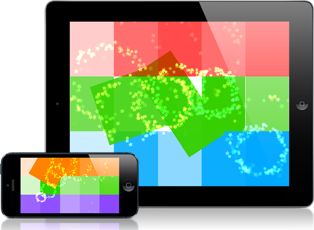Size Does Matter
January 28th, 2011
If you’ve been reading my blog for a long time (and if you have, I thank you), then you may recall I post I wrote about a year and a half ago called “My iPhone’s Not Cheap, but my Apps Are“. At the time, I was trying to find reasons why we were seeing a race to $0.99 on the App Store with the iPhone. One of the reasons I considered at the time was this:
3) Size Does Matter
As humans, we have a built-in instinct that bigger is better. Most people want a bigger house, more land, louder stereo, bigger lawn mowers, faster, larger cars, bigger TVs. For some reason it seems to be ingrained in our brains bigger things are more valuable.
…
I believe that because the games are played on the tiny iPhone, it reduces the perceived value to the customer. Why else am I willing to spend $15 on a game that I play on my TV that I wouldn’t pay $5 for on the iPhone?
But I didn’t really have any proof to back it up; it was just a suspicion I had. However, lately I’ve been reading a lot of books on behavioural psychology, and behavioural economics. It’s a subject that I’ve discovered I’m absolutely fascinated by, and makes me wish I’d done a psych minor in school. But I digress…
The book I’m currently reading is called “Influence: The Psychology of Persuasion” by Robert B. Cialdini. The current chapter is about how the appearance of authority causes us to react to things differently. However, he mentioned, almost in passing, a study done in 1952 by Dukes and Bevan about the way in which the perceived importance of something affects people’s perception of its physical size [1]. Objects that were thought to be more important were perceived as physically larger than objects that were attached less importance, even though they were exactly the same size!
However, what I found fascinating is that the same thing holds in reverse. The brain works the other way too: objects that are physically larger are perceived as having a higher status than small ones.
I believe that this is part of what drives the price of iPhone apps down. A game played on a small screen is perceived to be less important than the same game played on a large screen. I further believe that this is why we see the same game on the iPad listed at a higher price, yet people are willing to pay it. For example, Angry Birds is $0.99 on the iPhone, but $4.99 on the iPad. It’s the same game, but on a bigger screen. Back in the depths of our brains, something is clicking, saying “well Angry Birds is bigger on the iPad, so it must be more important.”
Now, I’m am sure that there are many other factors, psychological and otherwise, that play into the price points of apps on the store, but I believe this is a big part of it. And it’s nice to have a study to back it up. 😉
Owen
[1] Robert Cialdini, “Influence: The Psychology of Persuasion” (New York: HarperCollins) 223.






